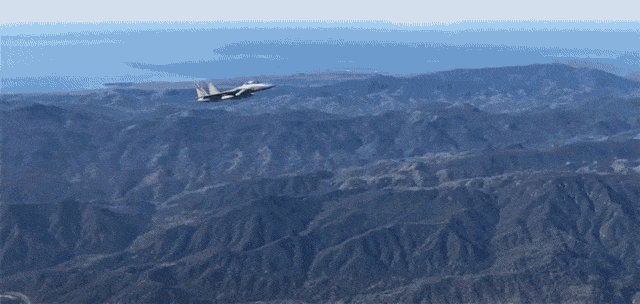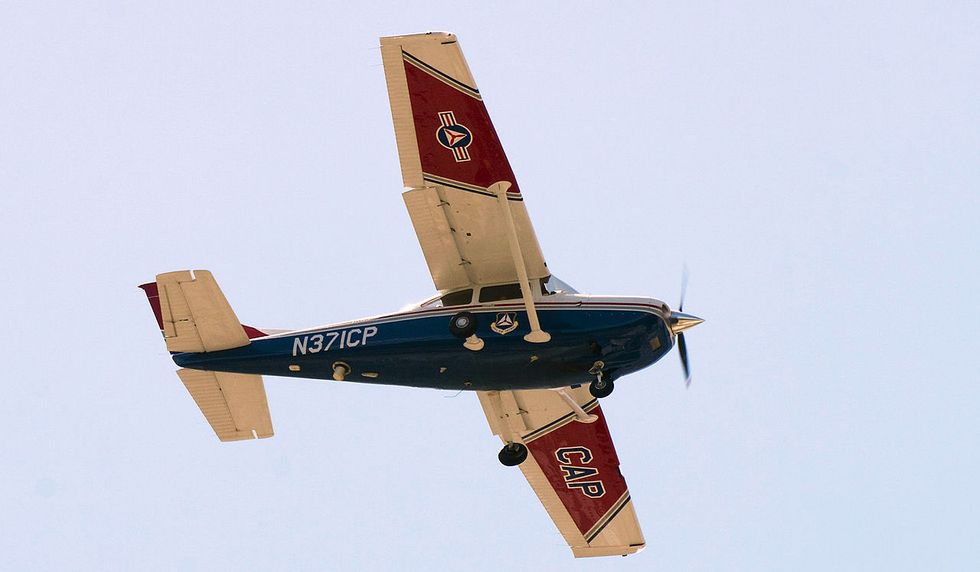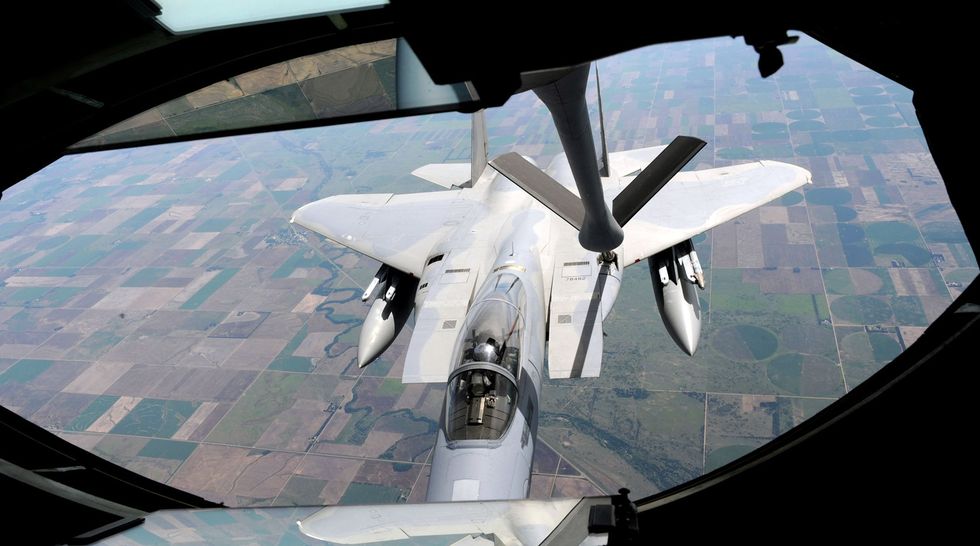A huge influx of general aviation air traffic is expected to hit the San Francisco Bay Area during the first week of February in anticipation Super Bowl 50. While you're watching football on Sunday, the Air Force will be watching the skies in case an errant pilot wanders into the protected airspace surrounding the big game.
But it takes practice to intercept a slow-moving Cessna with a big twin-engine supersonic fighter jet. The California Air National Guard and the Civil Air Patrol (CAP) have been busy preparing should such an encounter be required. CAP's California Wing spent an entire day last week flying two Cessna 182s low and slow around Fresno to help U.S. Air Force fighter jet F-15 crews maintain their proficiency. Another practice flight is scheduled for later this week over Oakland.
Each slow-moving Cessna takes a turn as the F-15 pilots locate and slow their aircraft to match speeds and communicate their intentions. A third CAP Cessna flies overhead, coordinating communications between all parties involved in the mission.
In addition to their aerospace education and cadet training program, CAP is probably best known for its search-and-rescue operations. CAP flies more than 85 percent of all federal search-and-rescue missions as directed by the Air Force Rescue Coordination Center. This mission marks "CAP's 15th year as a participant in North American Aerospace Defense Command air-defense exercises designed to protect the Super Bowl's airspace."
In response to 9/11, the Federal Aviation Administration (FAA) implemented a permanent flight restriction surrounding every major sporting event across the United States. The standard dimensions of the restricted area are only three miles in radius and just 3,000 feet above the ground. But combination of the already congested airspace in San Francisco and the influx of airborne traffic from one of the most-watched events in the world, this flight restriction has been enlarged to a 10 mile radius.
With newer restrictions around Washington DC and moving flight restrictions popping up whenever the president decides to travel, in flight interception between military and private aircraft have become more prevalent. So much so that the FAA has even set official In-Flight Intercept Procedures to train pilots in the event they see an F-15 or F-16 roll up and rock their wings. If a wandering pilot is shocked to see a fighter jet off their wing, what they won't see is the second fighter directly on their tail.
During the game, the F-15s will be supported by tanker aircraft operating out of March Air Reserve Base and will be available for in-flight refueling. The high-flying gas stations will supply fuel to the fighters from an altitude of 20,000 feet, allowing the fighter jets to continually stay in the air and monitor the no-fly zone.
Whether it's a curious pilot attempting to get a bird's eye view of the historic game or a more devious attempt to cause harm, the 10 miles above Levi's Stadium will be well-guarded come Sunday.















